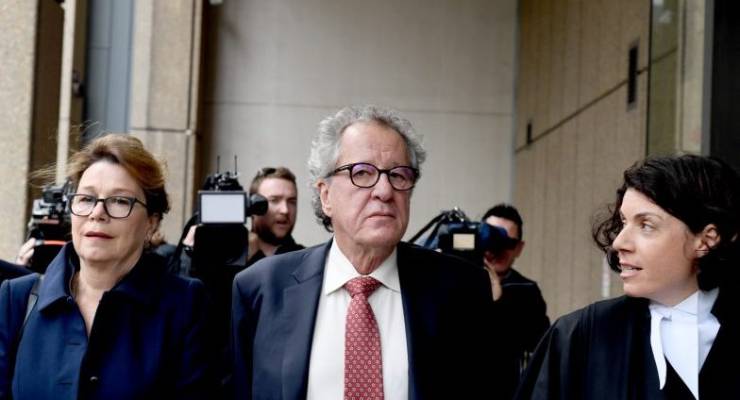
This is lightning speed for law-making. Two days after getting agreement from his state and territory counterparts on wholesale amendments to the model defamation law, NSW Attorney-General Mark Speakman introduced the bill to his parliament.
What will the changes mean for Australian defamation litigation?
The two big game-changers are the public interest defence and the restated cap on general damages. Would they have altered the outcome for a high-profile plaintiff like Geoffrey Rush?
The push for reform by Australia’s media has been driven by the fact that the current law in its practical application does not distinguish between “private” and “public” reputations, protecting and compensating both when they are defamed.
In theory the compensation is approached neutrally — all reputations having equal value — but in practice, as the Rush case exemplifies, public figures get much bigger paydays if they win their cases.
The media argues that that is perverse because it ignores the legitimacy of public interest in public people. The existing defence of qualified privilege is no use because the media cannot access it, leaving them able to safely publish allegations against public figures only if they can prove their objective truth.
The new public interest defence will correct this, recognising that people who make their living from their public reputation should be exposed to a reasonable level of scrutiny.
Rush was accused of serial sexual harassment of another actor who was many years his junior in age and experience, a classic power imbalance.
The first element of the new defence — that the published matter concerns an issue of public interest — would have been easily made out. Even absent the Me Too movement, alleged sexual harassment in the workplace (especially by a person of prominence) is unquestionably an issue the public wants to and should know about.
The second element of the defence is that the defendant (in Rush’s case The Daily Telegraph) must have reasonably believed that publication was in the public interest. This is not going to be as simple as it first appears. It doesn’t necessarily follow that because the general subject matter is of legitimate public interest, the publication was reasonably justified.
The amending bill includes a list of factors the jury or judge may take into account in assessing both aspects of the defence. However, it explicitly says the list is neither compulsory nor exhaustive. Speakman told parliament the intention was definitely not that it be treated as a mandatory checklist by the courts.
But it is there — and it will be powerfully influential on how the appeal courts develop their interpretation of the defence’s practical reach.
The list includes the seriousness of the defamatory allegations, whether they relate directly to the plaintiff’s public role (as opposed to private matters), whether they needed to be published urgently, the “integrity of the [media’s] sources”, and whether the plaintiff got a chance to reply before publication.
It also lists “the importance of freedom of expression in the discussion of issues of public interest”, as a nod to the principle underlying this new defence: the exposure of important dirt to the light of public scrutiny.
While these factors will inform what is or is not of public interest, they’ll have a greater influence on the question of the reasonableness of the media’s choice to run the story, in both timing and content.
The main reason the Tele lost to Rush was that it went too early, without strong enough evidence, and way too hard. It labelled Rush a predator and pervert (as the court found).
In my view, if it had had access to the new defence, the Tele would still have lost.
The fundamental problems with what it ran and why would still have been present. The reasonable belief must exist at the time of publication. The Tele’s belated mad scramble to shore up its defence, by coercing the alleged victim into the witness box and trying to bring in the supporting allegations of witness X, would not have helped.
The fact would remain that when it decided to take Rush down, the Tele did not have anywhere near enough of a basis to reasonably believe that what it published was in the public interest. The defence would fail.
The payout would, however, have been a bit smaller. Rush was awarded a record $2.87 million, of which $2 million was for economic losses past and future — that is, lost income. $850,000 was “non-economic” or general damages, supposed to compensate for the loss of reputation and hurt feelings.
The existing law was designed to cap general damages at a fixed amount, about $400,000. Some courts had interpreted it in an odd way, which I won’t go into because it’s tedious. Suffice it to say that, under the new law, Rush might have got about $450,000 less.
There are many other notorious defamation cases — Eddie Obeid’s win against Fairfax is a great example — which would have gone the other way with the benefit of the public interest defence. Rush’s case is not, I think, one of them.








Crikey encourages robust conversations on our website. However, we’re a small team, so sometimes we have to reluctantly turn comments off due to legal risk. Thanks for your understanding and in the meantime, have a read of our moderation guidelines.